Reporting Suspicious Aquatic Species
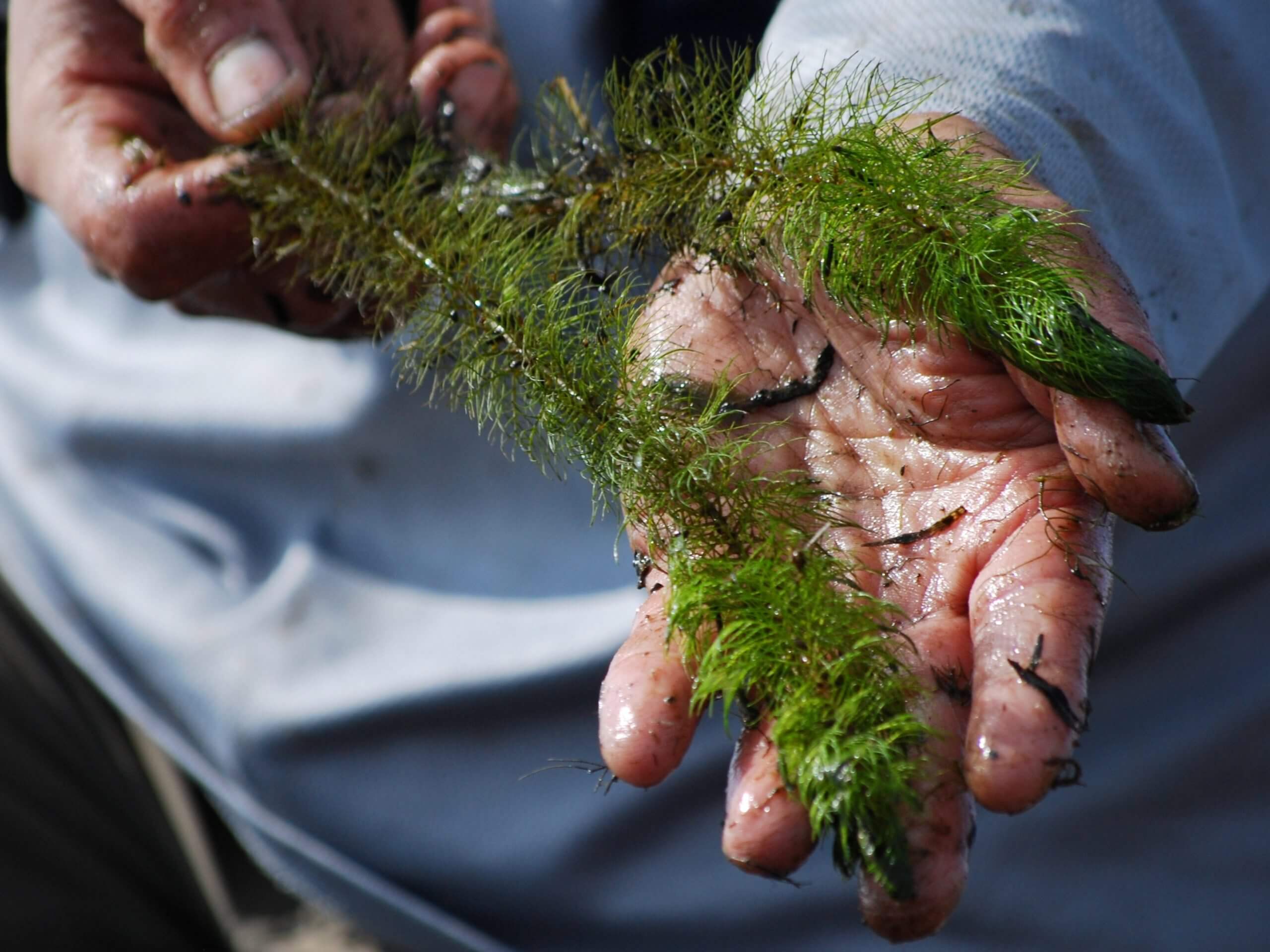
Quick Links
LSM Programs & Tools
Latest News from LSM
Forms & Data Sheets
 Aquatic Invasive Species Reporting Guidance Information
Aquatic Invasive Species Reporting Guidance Information
 Samples collected in 2023 for the Courtesy Boat Inspector Program should be sent to Lake Environmental Association (LEA).
Samples collected in 2023 for the Courtesy Boat Inspector Program should be sent to Lake Environmental Association (LEA).
Instructions and general guidance for what to do if you find a suspicious plant or animal in your lake below…
Collect a specimen:
Plant specimens
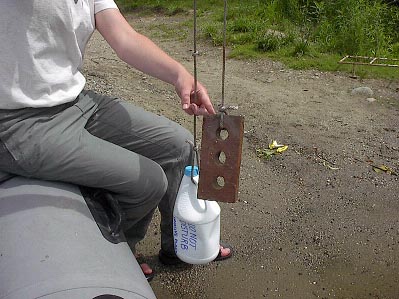
You must be very careful when collecting a plant specimen. Fragmentation could result in an invasive plant spreading to other areas of the lake. DO NOT attempt to pull the plant out by its roots. (This is very important!)
When collecting samples from a live lake plant, please be sure not to remove the whole plant. Snip off one or two pieces of healthy stem from the plant (roughly 8 to 12 inches long) including as many different features as you can (flowers, fruits, leaves, etc.). For rooted floating leaved plants, be sure to include as much of the stem as possible.
Mark the location of the plant with a weighted buoy. In the event that your plant is invasive, this will help the DEP quickly locate the infestation and take proper action. If possible, mark the location on a map. A map of the waterbody may be available on our Lake Pages.
If the plant is covered with algae or tangled in debris, remove as much of the unwanted material as possible, without damaging the specimens. Keep the specimen in water, in a cool place such as a refrigerator. This will keep it fresh until you are ready to photograph or ship.
IMPORTANT: Depending on the plant, a photograph may not be adequate. We may need to see the physical specimen, so please do not discard your specimen until you hear back from us, and be sure to keep it fresh as described above.
Animal specimens
If you collect an animal specimen such as a snail or crayfish, you can keep it alive in the refrigerator for a short while in a container of water. Use only enough water to barely cover the organism (to maximize air/water exchange). If temporarily storing outside, put the organism with just enough water to cover, in a bucket of clean water in the shade. Often, a photograph of the organism, as described below, is sufficient to identify it. If we need to see the actual animal we will ask you to euthanize it. (Place it in a sealed container in the freezer for one hour, and then to preserve with alcohol for shipment. More on this below.)
Taking a “Readable” Digital Photo
Plant specimens:
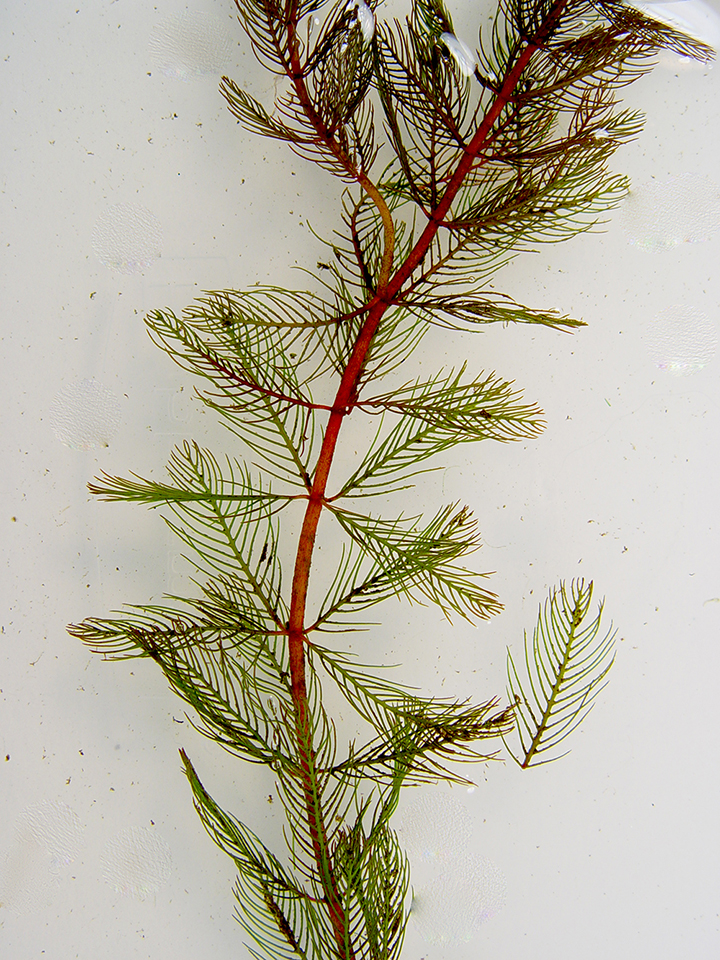
Float the plant in a tray of water long enough to stretch the sample out fully, with enough water for the plant to float freely. The tray bottom should be white (or clear and placed on a white surface).
Put something in the photo/s to show scale e.g., a ruler or coin.
Take a high-resolution digital picture. The image must be in focus and show the greatest amount of detail possible. Adjust lighting to minimize glare.
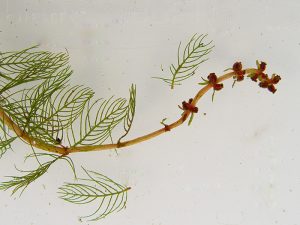
If possible, take close-ups of specific features, such as individual leaves, a single whorl of leaves, flowers, fruits or other structures.
This specimen has been arranged to clearly show leaf arrangement and other morphological features. It is a high-resolution image, allowing on- screen magnification. It is recommended that all photos include an object to provide scale (the only bit missing from this otherwise excellent photo submission).
This photo shows the emergent flower spike and additional leaf detail. The light is good; the resolution could be better.
Animal specimens:
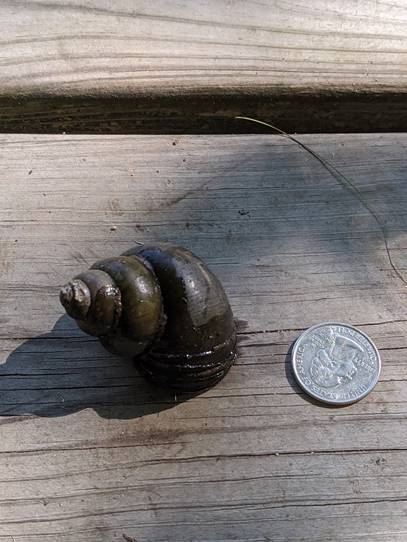
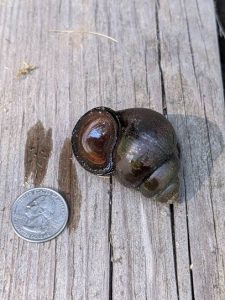
Place animal on a plain, light-colored background.
Put something in the photo/s to show scale e.g., a ruler or coin.
Take a high-resolution digital picture. The image must be in focus and show the greatest amount of detail possible. Adjust lighting to minimize glare and or excessive shadow.
Take one photo of the critter’s back (dorsal side) and one of its front, belly or underside (ventral side).
Submitting the photo(s)
If you are a member of the public or a volunteer, please send a sample or good quality images to the Lake Stewards of Maine Office and contact us at HERE to let us know it is on its way.
If you are a Certified Courtesy Boat Inspector, please contact LEA.
LSM Response:
We will contact you within 3 working days of receiving your photo submission, and will provide an identification (to the extent possible) whether or not it is an invasive species. If the organism is invasive, proper authorities will be notified, and you will be advised as to next steps.
If We Need to Examine Your Specimen in Person:
In cases where identification to species is not possible from submitted photographs, we will ask you to send us the actual specimen, by following the directions below.
Packaging plants

Place specimens a water-tight plastic bag, (e.g., Ziploc) marked with your name, phone number and email. (You will have already provided the additional information that we need when you filled out your online submission form.) Depending upon the sturdiness of the specimen, you may or may not need to add additional water to the bag. Please see below.
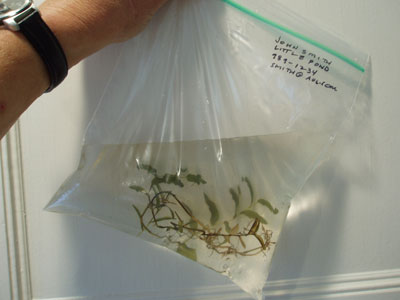
Sturdy plant sample packed damp, but without additional water. DO NOT wrap the plant in a wet paper towel or other absorbent material. air from the bag before sealing.
Flimsy plant sample packed in enough clear water to keep hydrated, and to cushion
Make sure the bag is sealed tightly and place it in a small box with enough packing material to prevent movement. PLEASE DO NOT use padded envelopes to mail bags containing water!
Preserving and packaging animal specimens
Euthanize the animal first by placing it in a sealed container in the freezer for one hour; then preserve the specimen container filled with enough preservative to cover. The best preservative for small animals such as crayfish and snails is ethyl alcohol (sometimes abbreviated as ethanol or EtOH), diluted no more than 70% with water. Isopropyl alcohol (isopropynol) will also work, but ethyl alcohol is required for any later genetic studies that may be needed.
Make sure the container is sealed very tightly and place it in a cardboard box with enough packing material to prevent movement. PLEASE DO NOT use padded envelopes to mail preserved specimens!
Shipping specimens
ALL SPECIMENS should be shipped early in the week. Plants mailed later in the week may arrive on Saturday, when no one is here to process them. Please contact LSM at (207) 783-7733 or stewards@lakestewardsme.org to let us know the specimen is on its way. We will be looking for it.
Send packaged specimens to:
Lake Stewards of Maine
24 Maple Hill Road
Auburn, Maine 04210
